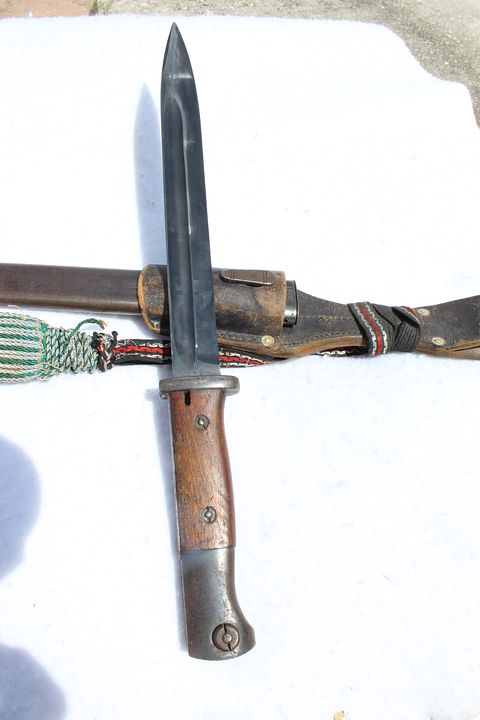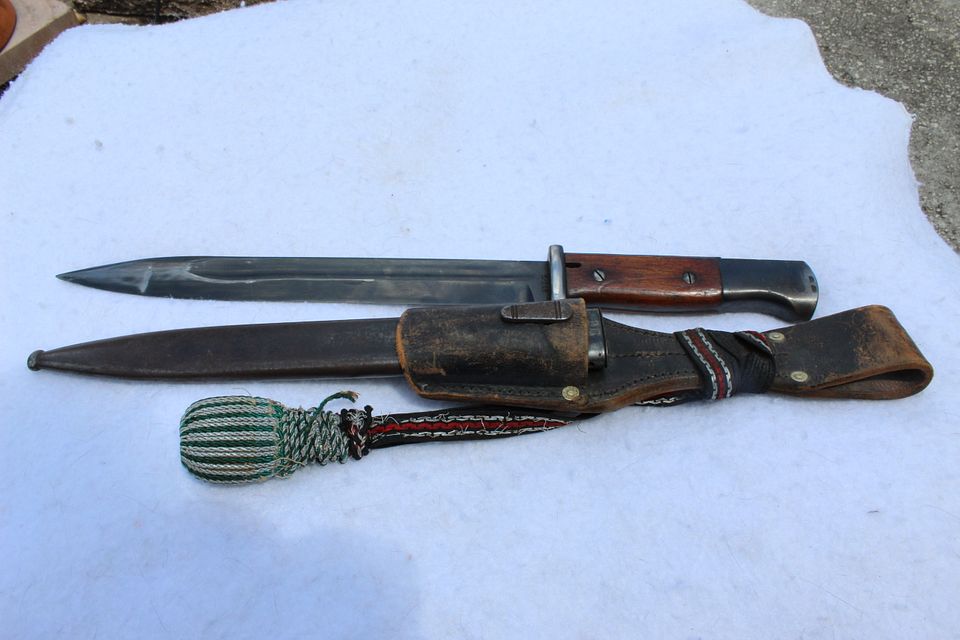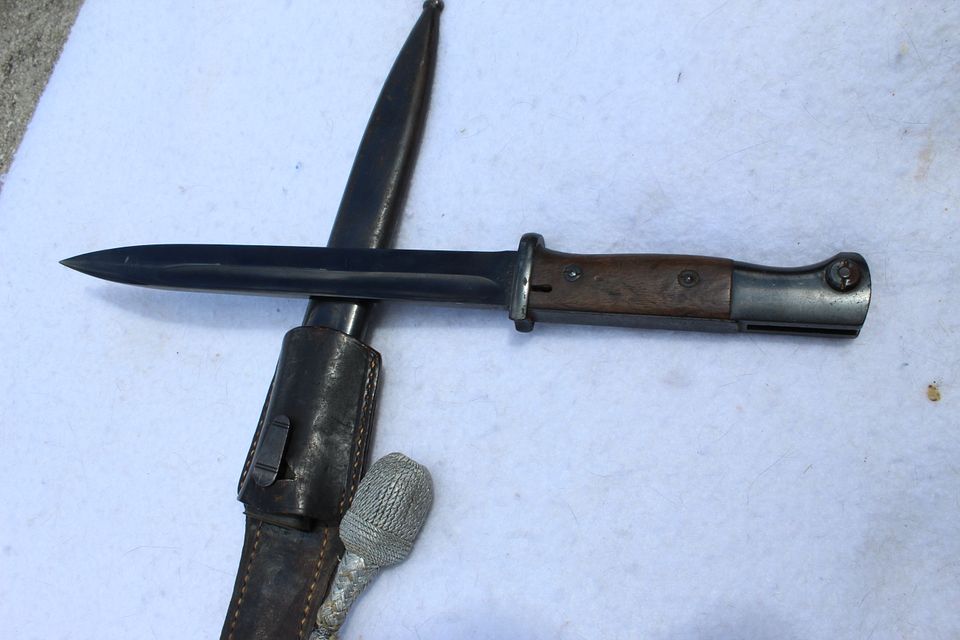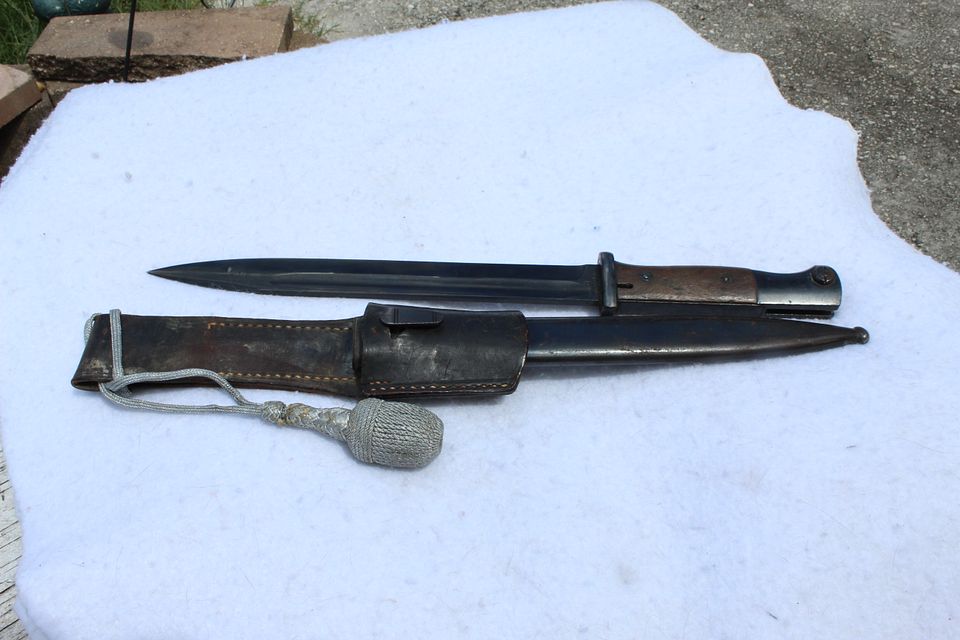The tassels are sword knots. Those were traditional items in the German army, and in others as well, that reach back to the late 17th century, at least. They wrapped around the wrist, to prevent dropping the side arm.
In the case of the common soldier, the knot also conveyed the soldier’s position within his regiment, by combinations of the tassel’s and slide’s or crown’s colors. For example, the first company’s tassel and crown were generally white, the second company might have a white tassel and red crown, and so on. There is even a specific term for this item in German, a Faustriemen, literally, “fist-strap”, and the tassel is a Troddel.
In the case of officers, whether infantry or cavalry, the knot and cord reflected the crown’s colors, originally a silver knot on a black leather strap worked through with silver-the Prussian colors. In the armies of other German states, the colors reflected the respective sovereign’s or dynasty’s colors. By the time of the Kaiser’s army, the officer’s sword know was all silver. The second knot in your pics is an officer’s knot, and so, isn’t original to that side arm. That knot would have been worn with an officer’s sword, or by the time of the Third Reich, a ceremonial dagger in certain orders of dress.
The officer’s sword knot was called a “Porte-epee”, a traditional term borrowed from the French (“carry the sword”) centuries before, and preserved down to the present.
The other one looks like a non-commissioned officer’s knot. In the Prussian army, while the ordinary soldiers had their colored knots, by company, the corporals and sergeants wore a knot in the same style as the men, but in black and silver again, to show that their connection to the crown. When the old tricorn and bicorn were still in use, they had cords that circled the hat’s crown, with tassels showing at the corners, and non-coms had black-and-silver cords there, too.
The Luftwaffe and the Kriegsmarine used similar systems with their edged sidearms, so strong a tradition it was in German arms.



